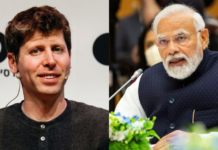A phygital model acts as a hybrid solution to the current scenario where students are studying from home
This is an exclusive interview conducted by Santosh Vaswani, Content Writer & Editor at CIO News with Pankaj Bande, Chief Technology Officer (CTO) of WizKlub.
When asked about the concept of a phygital education platform and blended learning and its benefits for students in the post-pandemic era, Pankaj Bande, Chief Technology Officer (CTO) of WizKlub in an exclusive interview with CIO News, said, as the term suggests, “Phygital is a blend of physical + digital learning”. Though the term has been around for many years, the elements of physical touch and digital learning have changed.
Earlier, the term physical learning was only limited to an in-person experience delivered in a traditional offline classroom. However, with advancements in technology, physical experiences are being delivered using Smart Physical Devices that work with the digital environment and bring extremely rich learning experiences for the learner.
A phygital model acts as a hybrid solution to the current scenario where students are studying from home. Sooner or later, it will become a way of life for all education setups.
A black swan event such as the pandemic has transformed the way we learn, forever. It has given rise to opportunities that we didn’t know existed. However, limiting the learning to just online classes or content on tablets or smartphones becomes boring and ineffective over long periods. The same needs to be augmented with physical devices to improve the efficacy and efficiency of learning.
As an example of the phygital experience, WizKlub Young Product Designer Program (YPDP) provides an immersive phygital experience to the learners that allow them to tinker with projects that are a blend of physical hardware and software using our platform. The YPDP program enables children to experience a product designer’s journey for creating Smart Devices and Mobile Robots using advanced technologies and physical devices. Learners can touch and feel the technology products that they design, build, and code as part of their journey of becoming creators of tech products.
Technologies such as Augmented Reality and Virtual Reality (AR/VR) are becoming the mainstream in educating children right from the comfort of their homes. Using these technologies, the physical devices come to life and interact with the digital learning environment to create unique learning experiences.
Students can have hyper-personalized learning driven by their interests and current aptitude in a subject area or skill. One does not need to go through the same curriculum that has a cookie-cut approach for everyone. Moreover, accessibility would increase exponentially with students being able to pursue courses from a variety of platforms making the place of learning irrelevant. This wave of Ed-Tech innovation is going to bridge the physical divide, digitally!
When asked about the impact of the pandemic on the education sector and how challenging is the phygital/digital learning platform for students in the new normal, he said, this generation of children is born with a mobile device in their hands. Exposure to technology has fundamentally changed the way this generation learns. The big lessons have given way to bite-sized learning capsules. Rote-based learning has given way to project-based experiential learning. The “I talk, you listen” way of teaching is making way for a “let’s discuss and solve together” approach.
Ignoring this behavioural shift is going to come at the cost of losing the learner’s interest in learning.
However, Ed-Tech companies have the responsibility to ensure that the pedagogy is married to tech in a manner that ensures high engagement and learning efficacy rates. Creating one at the cost of another would result in either higher dropout rates or unskilled learners.
In the context of the pandemic, the education sector is forced to use technology and the adoption rate has accelerated manifold. What might have taken 10 years is going to be a reality in one-third the time.
Some areas like social interaction are slightly more difficult to create with as much effectiveness in pure online environments. However, cognitive learning and technology immersion can be far more effective using digital technologies.
“I believe that phygital learning is empowering students with choices based on their interests and current aptitude”.
“I believe, with the initial hiccups of online learning gradually fading away, children would get a much richer learning experience using the phygital learning approach than the traditional offline classroom used to offer”.
When asked about the steps according to him that can be taken to overcome these challenges for a bright phygital/digital future for students, he said, there are fundamentally 3 aspects that we as a society need to work on:
- Access: We need to ensure access in the form of connectivity and devices. India still has a large population of school-going children that do not have access to either or both.
- Recreate learning experiences for children that incorporate the new best pedagogical practices and marry that to emerging technologies that are second nature to this generation of children. For instance, casual yet structured conversations with Alexa integrated with learning management systems would make learning more engaging and efficacious.
- Reimagine the role of a teacher to be a learning facilitator rather than someone who just disseminates knowledge. Phygital platforms would be doing a much better job of disseminating knowledge and even imparting skills than an average teacher would be able to do. So the teacher’s role would move to ensure that the student is continuously learning and facilitate the learning process.
When asked how AI, ML, IOT, or other technology can create immersive experiences for students concerning phygital/digital education, he said, this generation of students is surrounded by technology and the tech becomes a natural extension of self for these kids.
These technologies, when used effectively with a structured pedagogical approach, work like magic.
The holy grail of learning has been to provide a unique learning path to every learner based on his/her interests and the current level of proficiency in that skill or subject area. This personalization is not possible in a traditional classroom.
Once a student embraces the phygital learning environment, ML helps the platform learn about the student and eventually gets a clear understanding of how a particular learner learns the best! AI helps create the personalized learning path based on this understanding and the IOT and other immersive technologies deliver a learning experience that keeps the learner engaged and delivers a high learning efficacy.
When asked how a hybrid education model could shape the future, he said, the shift towards greater use of technology marks the dawn of a new era for teaching.
2 broad areas would see a fundamental shift:
- Use of technology for more effective teaching: The use of tech in teaching would free a lot of bandwidth for the teachers by automating mundane tasks. The amount of time spent in knowledge dissemination would dramatically reduce. The time spent on correcting assignments and formative assessments would simply vanish. The teachers would have a lot more time to work with individual students and cater to their unique learning needs.
- Learning beyond the classroom: Students would potentially learn as much outside of the classroom as they are learning inside the classroom. This would ensure that the students are getting well prepared for their careers in the coming decade and are not limited by the curriculum of the school system. For instance, thousands of students are acquiring skills like logical thinking and complex problem solving through WizKlub Higher Order Thinking Skills program as the school system does not provide a structured approach to build excellence in these areas.
When asked how user-friendly digital technologies can be for students, he said, as with every product design, there would be well-designed user-friendly digital experiences and ill-conceived products that tend to force-fit a technology than make it seamless.
This generation of kids is far more comfortable adopting technology and learning using technology if designed and delivered well.
However, if people continue to limit digital technology to just an online class over zoom, the learners would continue to suffer!
When asked about the challenges in implementing digital technologies in the education industry and what can be done to overcome these challenges, he said, the biggest challenge of adoption is the educators and not the learners. As adults, we get habituated to doing tasks in a certain manner and find it difficult to change that dramatically. It becomes even more difficult if adults are not consumers of these technologies and finds it difficult to relate how the students are using these technologies in other domains (for gaming, entertainment, social interactions, etc.)
The key to this change is to induce these technologies gradually where the teachers themselves first become consumers of these technologies and then start using them effectively for delivering learning experiences.
He said WizKlub fundamentally believes that this generation of school-going children need to be skilled quite differently compared to the education that the last generation got. These children need to develop analytical skills, critical and logical thinking skills, complex problem solving and decision-making skills, collaboration, and self-management skills, and an outlook to look at the technology around them from the eyes of an explorer and creator. These skills would ensure that they are ready for the uncertain yet exciting opportunities that await them in the coming decade.
Also read: CIO News interviews Shri Wangki Lowang, Minister (IT) of Arunachal Pradesh
Do Follow: CIO News LinkedIn Account | CIO News Facebook | CIO News Youtube | CIO News Twitter
About us:
CIO News, a proprietary of Mercadeo, produces award-winning content and resources for IT leaders across any industry through print articles and recorded video interviews on topics in the technology sector such as Digital Transformation, Artificial Intelligence (AI), Machine Learning (ML), Cloud, Robotics, Cyber-security, Data, Analytics, SOC, SASE, among other technology topics.
CIO News also covers the professional journeys of CIOs across all industries through print articles.






